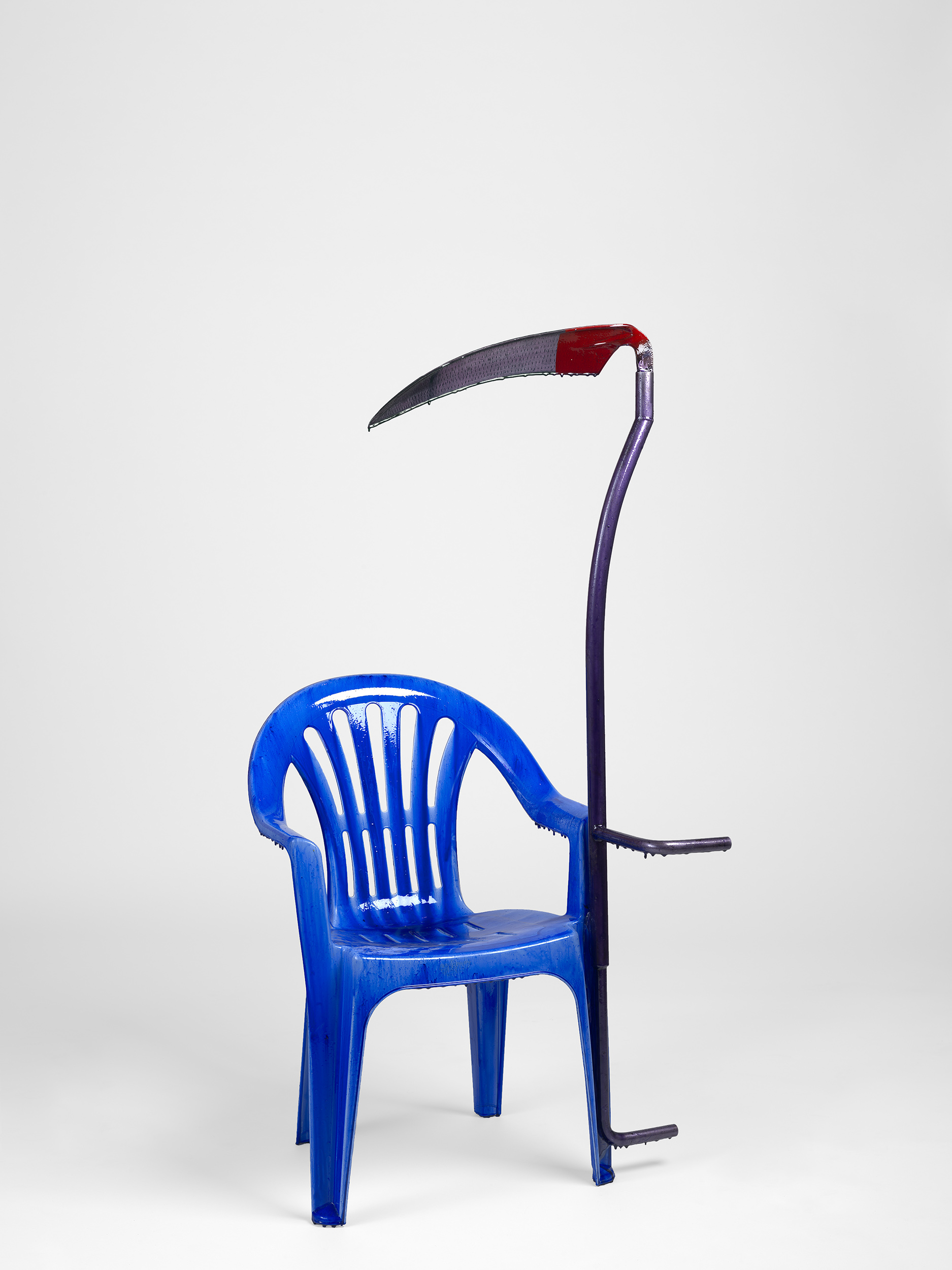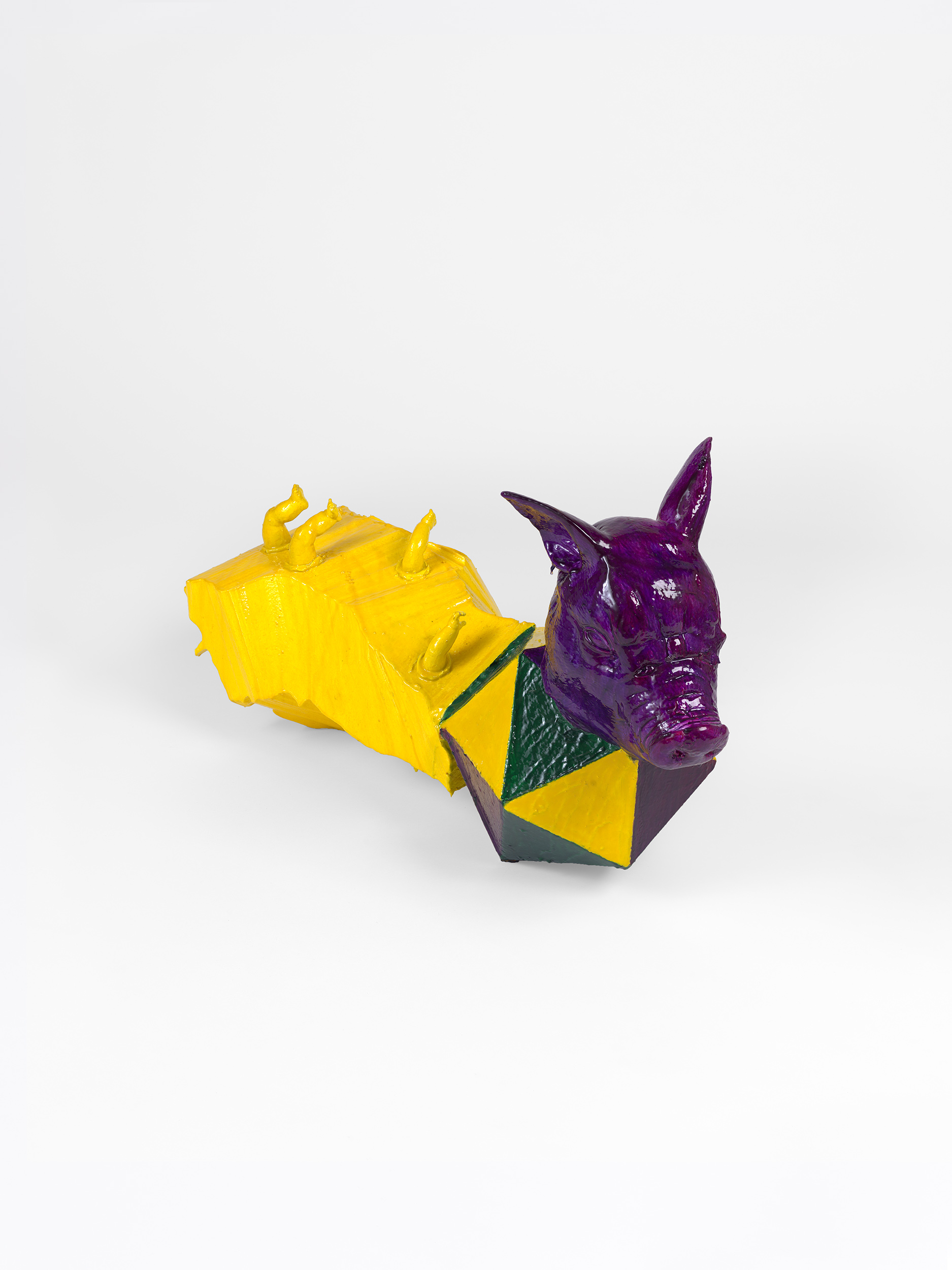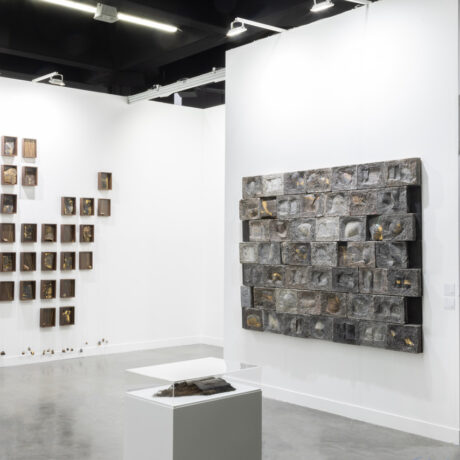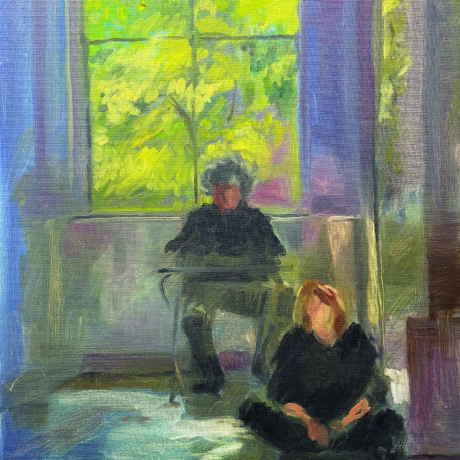
Can you tell me a little about the pieces that will be shown at Thomas Dane Gallery?
This exhibition is my fourth presentation at the gallery and it includes floor, table and wall-based work. My work usually originates from a perpetual interrogation of the cannons and typologies of sculpture, photography and drawing. I think objects and images are tools to reveal social or natural phenomena, and my works focus on the relationship between them, the object and the image, but there is also the body – ‘pre-born’ or ‘already-dead’, human and animal, whole and in fragments, declined, allegorical etcetera. The body has always been of great interest for me.
The larger works that will be in the exhibition are related with [pieces shown] in A Slip of the Tongue at the Punta de la Dogana in Venice in 2015. I tended to sever generic English garden sculptures from their context and breach the surface of one figure with the substance of the next. I tried to collapse all narrative, allegorical and material distinctions. To explain myself better, the skulls of a donkey and pig are presented as re-imagined bivalves. There are the sobriety of concrete and stone, intense colours and cumulative objects. For example Voyelles, which comes from a poem by Rimbaud, is an aggregation of plastic objects. Or Fairy Fantasy is made of polyhedral and extruded shapes, and I think challenges the viewer’s intelligibility. I also wanted to explore and experiment with something new, that is why I decided to show also a group of ink drawings and watercolours, a new medium for me.
Does this exhibition follow your typical avoiding of clear distinctions and thematic groupings of work?
I don’t have a typical way in which I act. I’m interested in standard variations but not in being typical. I am always doing group shows alone, because me and we are actually millions… Is it sufficient as an answer? My ‘typical’ avoiding of clear distinction and thematic groupings of work always comes from the viewers, from their gratification, and from the administration of art I would say, but not from me.
You’ve previously said that art can be both poetry or mathematics as it is not language. Do you feel that each piece embodies ‘both sides of the line’, or does your practice tend to ebb and flow between the two?
Art is not language. I think it’s quite easy to understand. Imagine the language on a line, in the middle there would be the language we are using now but because laws, rules and restrictions play a really important role they might change the way we use language. Laws and restrictions, are all language, but not totally formalized. And of course the formulations of the lawyers are closer to mathematics I would say, to reason. On the other side, you can use language more freely. If you go to the two sides of this dream of the language, on the one side you have you have something totally formalized, which is mathematics, and on the other side you have something totally informal which is the creative part. So basically, language is a structure or a tool that you can use and that can be repurposed for different occasions.
This also implies that a poet can be very dangerous for the laws, because he is managing the same words but in a complete different way. And I suppose this is one of the reasons why when there’s a fascist power the first people that are put in jails are the poets, because they touch precisely on what organizes us, our free language. Art has to be aware of this situation of language and of its own situation of not being a language. As an artist you have to know that everything comes through language, but not everyone keeps this in mind especially because between artists there are ways to communicate without language.
I use mathematics because I like it, it’s so formalized that when mentally you try to solve something, it’s really creative, because you have to find the solution and it’s like walking in the forest. You have to go and find, and when you reach the solution it’s pure and there’s nothing else than abstraction, it’s pure joy! Very often my pieces are done as a bet that I try to win. To win means to find a solution to the problem. So you put the problem on the table and work until you find a solution to it.
You have to feel that each piece of art embodies both sides of the line, but by being apart. A good work quotes both sides of the line of the language, for the viewer, not for the artist. Because there is always one who produces and one who receives, so we’re always in this balance.
You employ a wide range of materials and techniques. Was there one medium that first sparked your interest in making art, or have you always created in this way?
Yes I do employ a wide range of materials and techniques and if there’s one medium which first sparked my interest, that would be photography, because photography is everywhere. But I feel like answering that my first medium is photography is not a real answer, because photography is everywhere. Photography is the tool for curiosity. Through photography you make notes and you understand better the social living and how people react to things. Also, photography is not an image but has an image inside, just like a good painting has an image inside. And images are a mental thing, they have nothing to do with figuration, and that’s why mathematics sometimes is useful… Even music, no one asks why music is abstract. Everybody agrees with the abstraction of it, but not with the abstraction of objects. So, yes, I’d say photography because it’s the tool for exploring, making documents and being aware of the situation.
Do you always have a material or medium in mind when you begin to develop a work, or do works tend to evolve quite spontaneously?
I always try not to use the same material or medium more than once. The question of materiality has nothing to do with the question of medium. They are two different things. Medium is photography, TV, cinema. So of course there is material background, but no one considers cinema as material. The idea of putting together materials and medium is dangerous. Is the medium art? A gallery? or is the medium stone? The medium is gallery showing art made of stone.
The material comes as a solution to the problem. It could be anything, any material. But the material has the necessity to link the diverse part of what has been observed, and put it together. So it’s not all materials that can do everything, there are elements that make the formula work and lead to the conclusion of the image which is already there, others don’t.
‘Jean-Luc Moulène: Larvae and Ghosts’ is showing at Thomas Dane Gallery until 28 May. All images courtesy the artist and Thomas Dane Gallery, London





